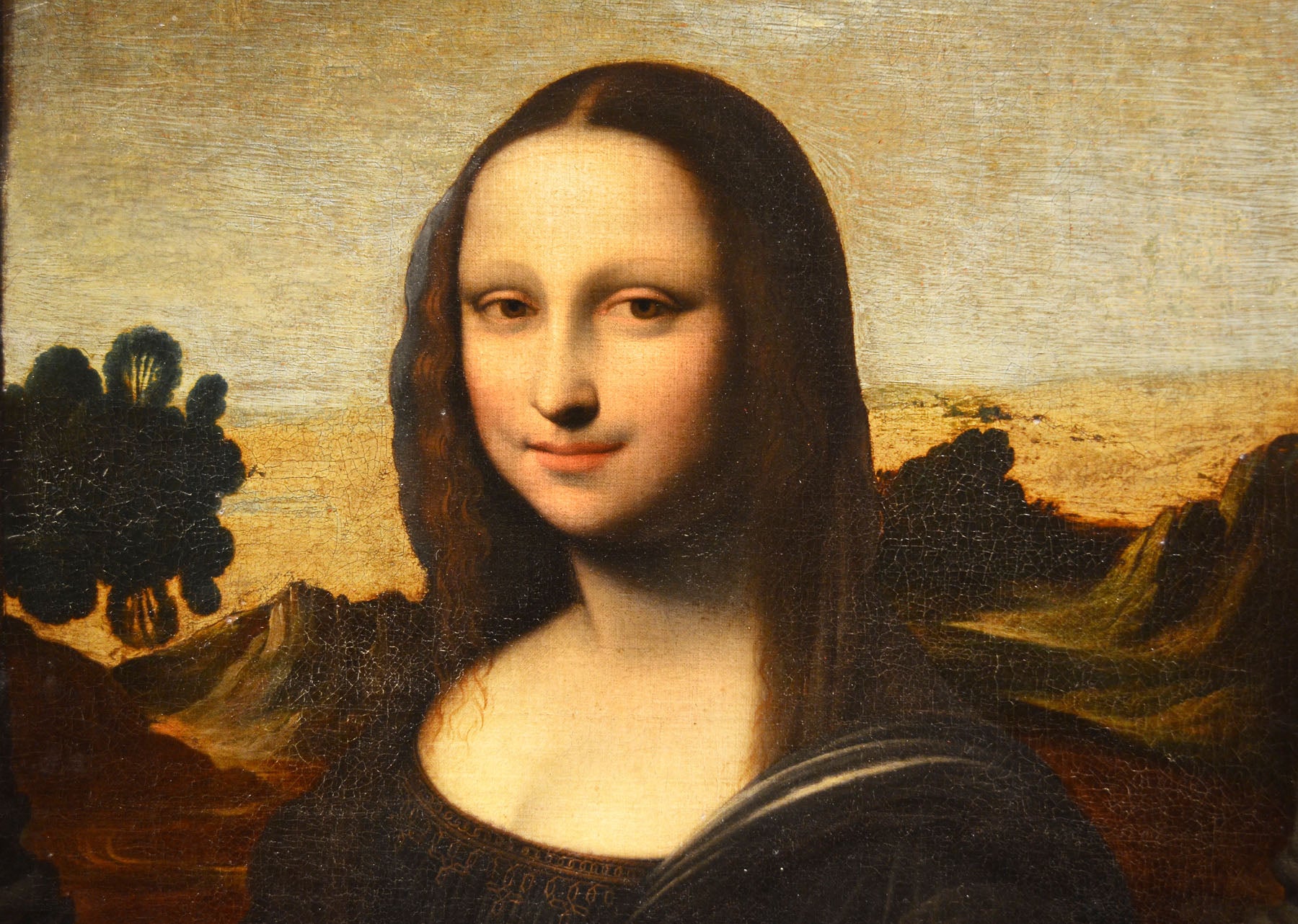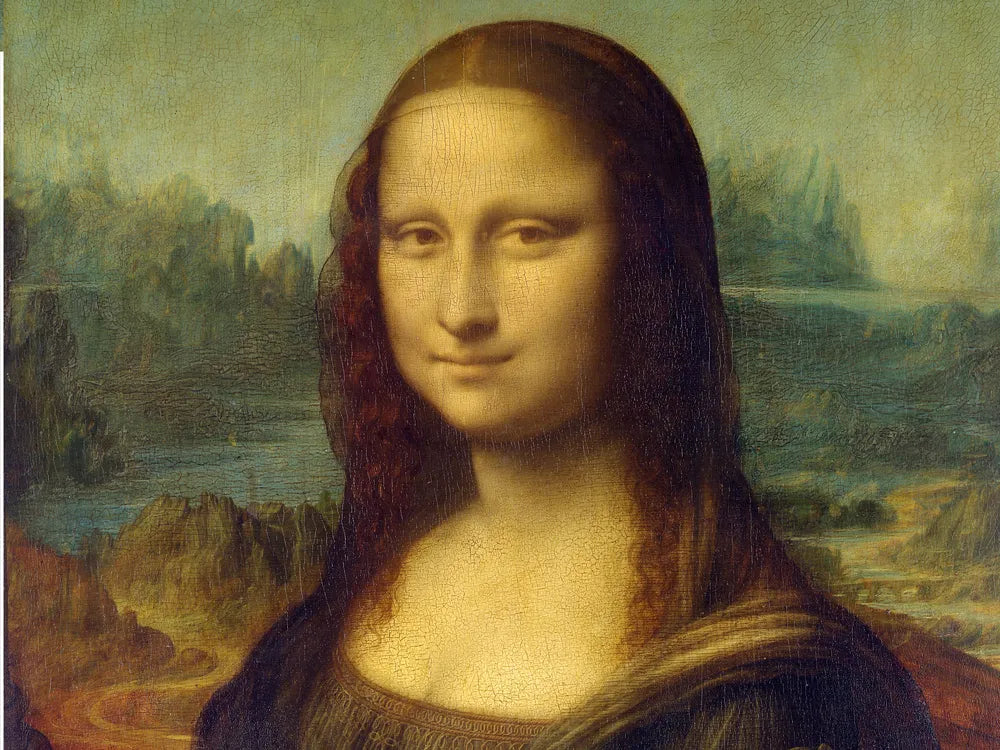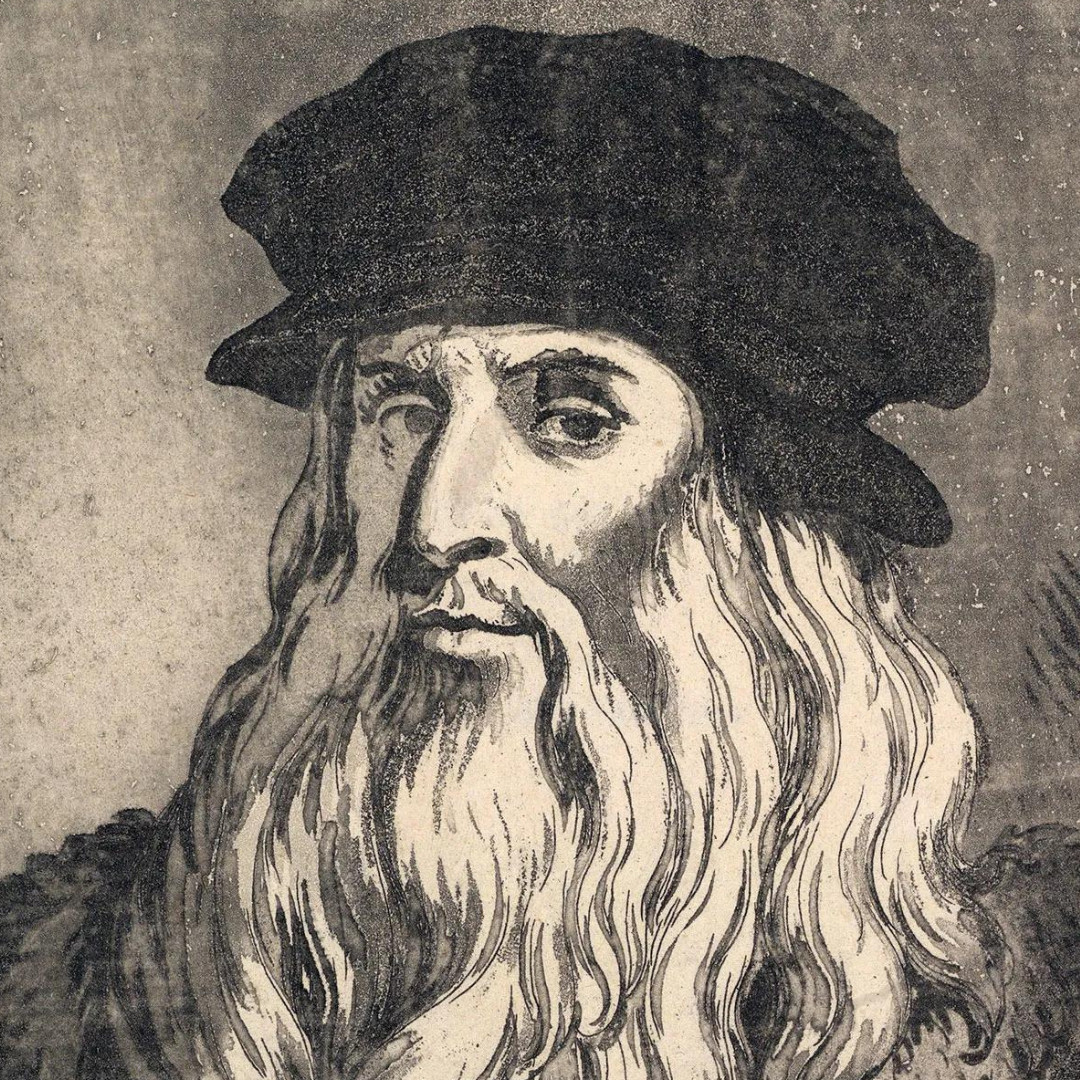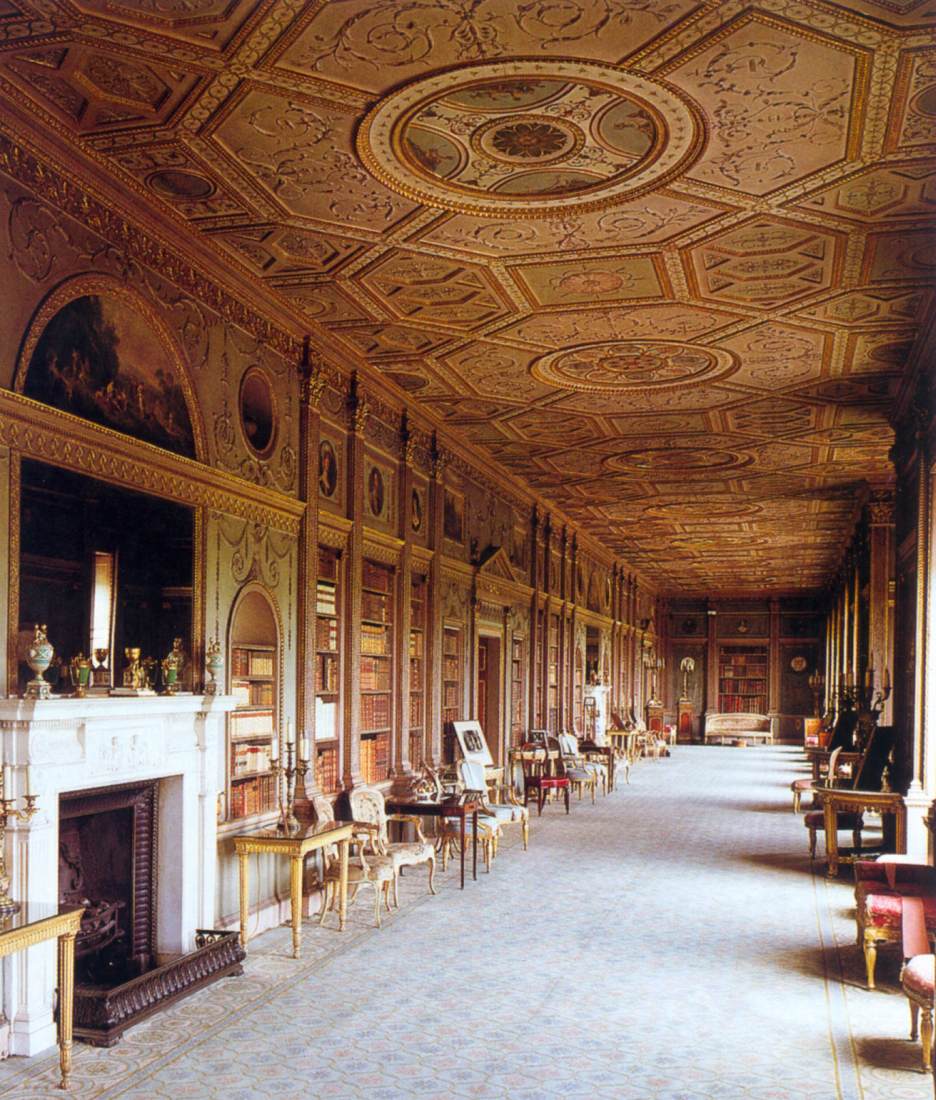

The Isleworth Mona Lisa

The original Leonardo masterpiece?
What's the story behind the Isleworth Mona Lisa and why do some believe it is the original painting created by Leonardo da Vinci? Certainly an intriguing question! Key details:
- Medium - Oil on Canvas
- Subject - Lisa Gherardini (who is Lisa Gherardini?)
- Dimensions - 84.5 cm × 64.5 cm (33.3 in × 25.4 in)
- Current Location - Private collection, Switzerland
Painting a picture...
Some experts believe this ancient panel unearthed in Isleworth in the 1920s is the 'original' Mona Lisa by Leonardo that hangs in the Louvre Museum!
Their theory goes like this - Leonardo likely painted an earlier version of his Mona Lisa portrait before the final canvas now famous globally. As an experimented artist, initial works and drafts were common for Leonardo.
The Isleworth portrait shows stylistic similarities suggesting an evolutionary step towards the ultimate Mona Lisa - the enigmatic smile, alluring gaze, background landscape, flowing hair. All less polished but bearing Leonardo's exploratory hand!
Intriguingly no confirmed records of the Mona Lisa exist before it entered French King Francis I's collection shortly after Leonardo died circa 1519. Theorists believe King Francis may have received an earlier rendition that was then refined further into the Louvre version.
Could the Isleworth portrait be that mysterious 'early Mona Lisa'? Some experts stake strong claims towards this based on the stylistic connections and analysis of cracks suggesting older woodwork. The lack of provenance records cloud matters though, leaving mystery unsolved!
So an alluring possibility persists that Isleworth's Roman lady glimpses the genius of Leonardo himself working towards his ultimate masterpiece centuries later! Let's dive a little deeper...
Key questions
Isleworth Mona Lisa vs The Mona Lisa - what's the difference?
The key differences between the Isleworth Mona Lisa and the original Mona Lisa painting by Leonardo da Vinci are:
- Age - The Isleworth Mona Lisa is believed by some experts to be an earlier version painted by da Vinci 10 years before the better known version in the Louvre. The Isleworth version depicts a younger Mona Lisa thought to be in her early 20s, while the Louvre version shows an older Mona Lisa believed to be in her 30s.
- Background - The Isleworth version has a different background that shows columns and a marble balcony railing. The Louvre version has the simpler, dark background with no structures or railing visible.
- Size - At 24 x 18 inches, the Isleworth painting is slightly larger than the Louvre's 21.5 x 30.5 inch version.
- Details - The Isleworth Mona Lisa shows some finer, more vivid details in elements like the hair, the embroidery work on the clothing, the veil, and the landscape in the background. Some of these details are more hazy or faded in the Louvre painting.
- Provenance - Unlike the Louvre's well-documented ownership history, the provenance and early history of the Isleworth work remains uncertain and controversial. Some experts believe it to be an autograph work by Leonardo while others disagree or question its origins. Its authenticity is still debated by art historians and experts.
In summary, the paintings differ in the woman's apparent age, specific background details, dimensions, subtle aspects of condition and detailing, as well as the debate over its legitimacy as an authentic Leonardo creation.
When was the Isleworth Mona Lisa painted?
The exact date of the Isleworth Mona Lisa is unknown and has been the subject of debate amongst scholars. Here are a few key notes about the possible date of the painting:
- It is believed by some experts to be an early, preparatory version painted by Leonardo da Vinci around 1503-1504, approximately 10 years before the better known version now in The Louvre, which is dated circa 1516.
- Swiss art historian Lukas Gloor has specifically asserted that the Isleworth Mona Lisa was begun in October 1503 based on historical records about da Vinci’s activities during that time.
- Italian researcher Giuseppe Pallanti, who wrote a book about the painting, has dated it to between 1503-1506 based on technique and historical documentation.
- Some supporters of the painting's authenticity view it as evidence of the early stages of Leonardo's work with the Mona Lisa subject prior to painting the Louvre version. However, multiple leading scholars dispute that the work is actually by Leonardo at all.
- Without definitive scientific proof, records from the early 16th century, or other hard evidence to go on, it is ultimately difficult for experts to assign an precise, indisputable date for the creation of the Isleworth painting. The early 1500s remains the best estimate based on the arguments made by those who believe it to be a genuine Leonardo work in progress.
So while supporters suggest dates in the 1503-1506 range, without conclusive documentation its exact origins and date of creation remain mysteries that continue to be investigated by historians and art experts.
Where is the Isleworth Mona Lisa now?
After centuries of mystery, the Isleworth Mona Lisa currently resides in a Swiss bank vault in Zurich as part of an anonymous international art collection awaiting further study and occasional public showings. Read more below

What's the view of the Mona Lisa Foundation?
Aha, the Mona Lisa Foundation! Well as one of the loudest proponents that the Isleworth portrait is indeed Da Vinci's original Mona Lisa, their views demand our attention!
This foundation of international art experts emphatically backs the theory that the earlier Isleworth portrait preceded the Louvre Mona Lisa as Leonardo's inaugural attempt. Their extensive research published in books and documentaries stakes claims around the below areas.
The Mona Lisa Foundation claim:
-
1
Side-by-side forensic analysis revealing shared details with Louvre Mona Lisa like landscapes, technique, the sitter's features in different stages. Finds the Isleworth version has an honest 'work-in-progress' feel.
-
2
Historical records of possible connections between Leonardo and early 16th century English nobles who may have transported his works to UK as the painter left Italy later in life.
-
3
Dating the wood panel material through dendrochronology to match Leonardo's lifetime in early 1500s, also DNA testing canvas fibers against his works. Marks of age validate possible provenance.
-
4
Utilising infrared scans, x-rays and microscopy to structurally and stylistically align the panel to Da Vinci paintings from the same period. Matches his exploratory manner.
-
Summary
So in the Foundation's opinion, extensive multidisciplinary evidence positions the Isleworth portrait as the Mona Lisa's predecessor unveiling Leonardo Da Vinci progressing towards his masterwork in stages - making it arguably the world's most valuable artwork!
-
But...
Doubts persist outside its camp. The mystery and intrigue continues!..
Some doubt the evidence...
Ahh, the plot thickens further! Legal disputes and scientific questions swirl around the foundation's claims that Isleworth's painting is Da Vinci's original Mona Lisa - worth nearly half a billion dollars if authenticated! Some key doubts:
- Leonardo experts argue lack of documentation of the portrait's ownership history casts suspicion. 400 silent years before its 1920s discovery fails scrutiny. Missing records of royal owners raise eyebrows.
- Independent analysts debate accuracy of the wood panel's carbon dating, also pointing to some employed methodologies lacking enough rigor. Provenance still requires air-tight verification.
- While similarities to the Louvre work exist, curators highlight the visual gaps indicating an artist still far from that masterpiece's photoreal qualities. Hard to link styles definitively to Da Vinci's hand.
- Is the foundation pre-disposed by financial interests into making sensational claims that aren't watertight academically? $200 million lawsuit by ex-US partner hints at turbulence behind corporate façade!
The Isleworth painting undoubtedly holds mysteries within its canvas - but whether those involve Leonardo Da Vinci remains contested.

How did the Isleworth Mona Lisa arrive in Isleworth?
Unfortunately, the early history and provenance of the Isleworth Mona Lisa before the 20th century is shrouded in mystery. There are no reliable records detailing how or when the painting showed up in Isleworth specifically. Here is a summary of the limited information available:
- The first documented owner of the painting was Sir Hugh Blaker - an art collector and critic living in Isleworth, England in the early 20th century.
- Blaker is said to have purchased the painting in 1913 under the impression it was the work of a pupil or assistant of Leonardo da Vinci, not realizing it may have potentially been an early original Leonardo version.
- There are no solid accounts of where Blaker acquired the artwork - multiple theories exist but none have been proven conclusively.
- Some speculate the painting may have come from a country estate sale, or that it was picked up obscurely while Blaker was traveling and building his extensive art collection through various European contacts.
- There is also a hypothesis that it was brought back to the UK by a family member connected to Renaissance art after traveling through Italy and encountering it there at some point.
So in summary - it remains unknown precisely how or from where the Isleworth Mona Lisa came from before ending up in the possession of Blaker in the 20th century Isleworth suburb of London, which gave the piece its current moniker. The painting's origins and path to Isleworth still contain many unsolved mysteries lost to history.
Who owns the Isleworth Mona Lisa and what's next?
The Isleworth Mona Lisa is currently owned by an international anonymous consortium that purchased the painting after it was revealed publicly in 2012. Here are some key details about the current ownership:
- The consortium that owns the painting has chosen to remain anonymous in public records and press releases.
- They purchased the painting shortly after its unveiling at a press event in 2012 from the family of Hugh Blaker, who purchased it in 1913.
- The consortium consists of many international art dealers and collectors based in different locations like Europe, the United States, China, and South America.
- The names of individual members have not been made public, though the primary coordinator who stores and arranges testing and display of the piece has been identified as Henry Pulitzer.
- Pulitzer comes from an art-collecting family, helped assemble the purchasing consortium, and keeps the painting stored in a facility near his home in Switzerland for security and preservation.
- Members of the purchasing consortium funded testing of the painting in 2015 to gather evidence supporting its authenticity using various high-tech scans, x-rays, and forensic imaging tests.
So while the exact identities are guarded, this multi-national consortium of elite art collectors and dealers jointly owns the Isleworth Mona Lisa since purchasing it in 2012. They aim to prove its legitimacy and occasionally exhibit the painting publicly.

Where can the painting be seen?
The Isleworth Mona Lisa remains in a Swiss bank vault most of the time. However, the anonymous international consortium that owns the painting has occasionally allowed it to be displayed publicly at special exhibits. Here are some details on where the painting has been and could potentially be seen:
- In 2012, the painting was unveiled publicly for the first time in Geneva, Switzerland. It was displayed only for one month before returning to its secure storage location.
- In 2015-2016, it was shown at The Mona Lisa Foundation's exhibit in Singapore as part of a presentation detailing scientific testing on the painting. It drew many visitors and worldwide press coverage.
- There are currently no permanent or long-term museum exhibitions planned for the Isleworth Mona Lisa. The owners prefer to keep it mostly out of public view for preservation and security reasons given its disputed authenticity.
- However, they have suggested they are open to loaning it out for temporary exhibits focused on Leonardo da Vinci's life and works pending further analysis by experts to determine if it is indeed an original Leonardo or just a skilled copy.
- Locations where it may be briefly exhibited again include Italy (Leonardo's home country), France (home of the Louvre Museum with the more famous Mona Lisa), Switzerland, London, New York, and private galleries or events sponsored by the owners' consortium.
Collections
-

Claudia Marchese
About the Artist Claudia Marchese is an Italian painter and designer illustrator...
More from Isleworth
-
Who is Lisa Gherardini?
Find out more -
Best places to visit in Isleworth
Find out more -
The history of Isleworth
Find out more

Interested in Art?
Take a look at Artfinder. They're on a mission to make art sustainable, accessible, affordable, and a joy to discover, while supporting artists to make a living doing what they love.
Check out this amazing acrylic painting of our very own Osterley Park, by Parul Baliyan.
The Isleworth Mona Lisa




